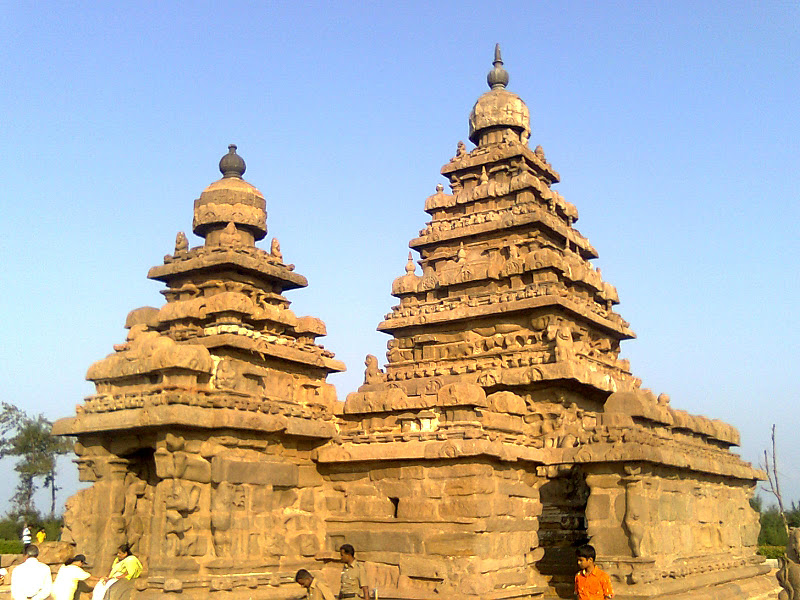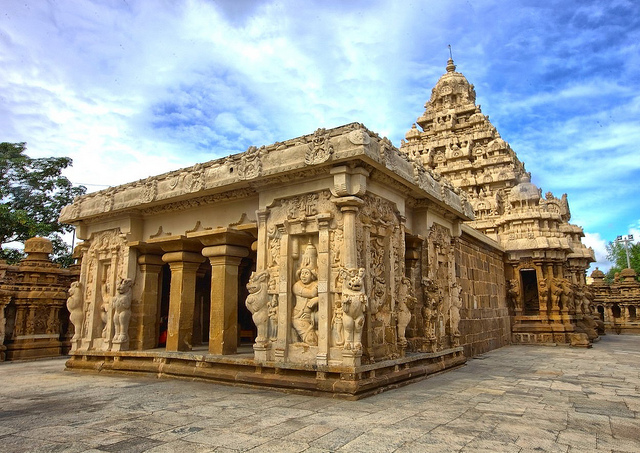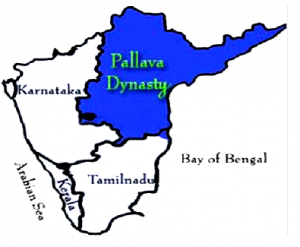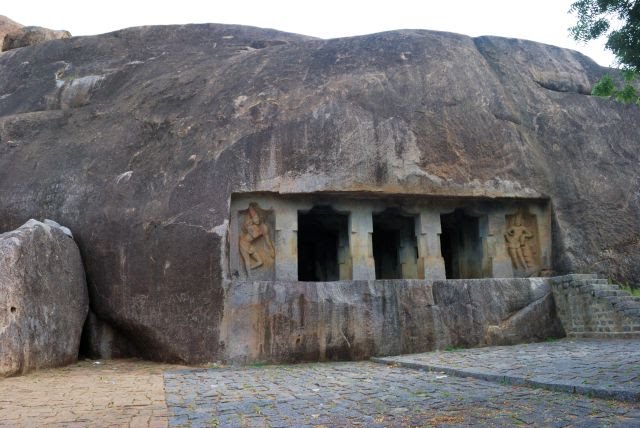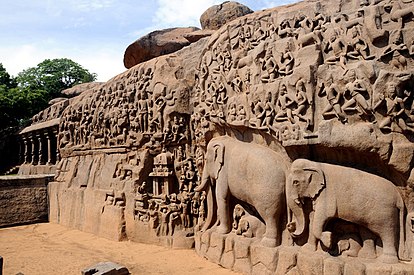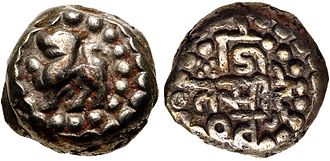- Home
- History of India
- Indian Dynasties
- Pallava Dynasty
Pallava Dynasty Map
Pallava dynasty:
Quick Facts:
Dynasty: Pallava
Capital: Kanchipuram
Ruling Era: 275CE-875CE
Important Pallava Kings: Vishnugopa II, Simhavarman II, Mahaendravarman I and II, Narasimhavarman, Nandivarman II and III, Dantivarman and Aparajitavarman.
Introduction:
The origin of Pallavas is still in obscure and debatable. Pallava dynasty ruled the southern part of India from 275 CE to 875 CE. After the fall of Satvahana dynasty, Pallavas gained importance and prominence as there was no other dynasty to take on. During the Satvahana period Pallavas served as feudatories to them and hence after the fall of Satvahana dynasty Pallava dynasty became powerful and took control of the states.
Pallavas were pastoral tribes who ruled southern
part of India for nearly 500 years. They were succeeded by the Cholas and the
Eastern Chalukya dynasty. The main languages that were in use during this
dynasty were Prakrit, Sanskrit, Tamil and Telugu. Kanchipuram was the capital
of Pallavas from 4th to 9th century and probably
Skandavarman was the first ruler of the dynasty.
History of Pallava Dynasty
The region of Thondaimandalam was conquered and rued by Pallava dynasty. It is still not clear about the origin of Pallavas. It is believed that the Pallavas were branch of Pahleves of Parthians but there is no authoritative evidence for this. In Sanskrit Pallava means creeper and they were also known by the name Thondaiyar in Tamil which also meant creeper.
From this it can be presumed that
Pallavas could have been a local tribe. There are various theories about the
origin of Pallavas. Sathianathaier sees Pallavas as the natives of
Tondaimandalam. He further states that they could have absorbed the north
Indian practice under the Mauryan Asoka’s rule.
Different scholars argue different concept. According to Srinivas Aiyangar, Pallavas belonged to Naga family. Ptolemy states that Aruvanadu region which is the region between Penna and Ponnaiyar rivers were earlier ruled by King Basaronaga around 140 CE. It is believed that by getting married in to Naga family the Pallavas would have acquired Kanchi.
According to
Nilakanta Sastri Pallavas were feudatories of Satvahanas. He further goes on to
say that the Pallavas were strangers to Tamil country. It is also believed that
they were subsidiary to Andhra Ikshvakus dynasty. Later Pallavas became
independent and moved further towards Kanchi.
The earliest
record show that the inscriptions are in Prakrit and later in Sanskrit and
after that in Tamil. Shiva skandavarman is considered as the greatest ruler of
Pallava dynasty. He performed Ashwamedha and other Vedic rituals. Later by second
half of sixth century Simhavarman ascended the throne who was a follower of
Buddhism. After Simhavarman another great ruler Mahendravarman ascended the
throne. He was a great poet, musician and has built many temples.
Administration under Pallavas
Pallava dynasty had a clear administration. The Hirahadagalli copper plate inscription which was issued during 8th century describes the Pallava administration as “ the king at the top and under him all the ministers who are in charge of different administrative matters”
Kingship was
hereditary and on some occasions king was being elected. Since Pallavas had a
vast empire ranging from Nellore in the North to South Pennar River in the
south a planned administration was required. Most of the kings were scholars
and had good knowledge about the administration. Mostly the rulers of Pallavas
followed Mauryan system of administration.
The kings were awarded with high Birudas or titles like Maharajadhiraja, dharma- Maharjadhiraja, Agnistomavajpeya, Asvamedha-yaji and many more. Most of the kings performed yagas for the well being of the state and its people. The titles or Birudas were usually in Sanskrit, Telugu and Tamil.
The kings of
Pallavas usually used suffix “Malla” for Birudas or honorific titles like Mahendravarman
1 used the title Satrumalla and his grandson Paramesvara I was called Ekamalla.
Ministers:
The governor
of the state was assisted by the district officers who in turn took the help of
local bodies. All the local administrators along with governors and ministers
were meeting frequently to keep an update of the administrative matters. The
Sabhas in the villages took care of irrigation, maintaining law and order in the
state and all other petty criminal cases. The Sabha and the district
administration worked closely together for the development and growth of the village.
The representatives of Sabhas were known as Perumakkal.
The Sabha was
given many duties such as taking care of irrigation facilities and work,
monitoring temple funds. The inscriptions at Ukkal and Uttaramerur, Adambakkam
are the evidence of existence of Variyams and Ganas who performed various
administrative tasks. It is believed that the funds and the gifts that were
collected were under the control of Sabha and the committee that were
appointed.
This division
in the administration system were also known as Mandalam, Kottam, Nadu and Ur. The ministers were known as Amatyas and even
they were given titles as Uthamaseelan, Brahmarajan and Peraraiyan. The duty of
the ministers was to carry out the order of the king and see the developmental
work of the state. The ministers were divided and were assigned with the duties
of commander in chief of army, finance, maintaining law and order and Purohit.
The ministers and the feudatories played a very important role in the
coronation ceremony of the king.
Tax system under Pallavas:
Tax system was
not very harsh during Pallava period. There were mainly two kinds of taxes paid
by local people. One was the land tax which was paid to state and it was the
major source of income to the kingdom and the other was the local tax which
were collected in the villages and were spent on the needs and development of
village.
Kallanakkanam
was a kind of tax which was levied on the people in the later part of Pallava
period was that a small amount of money was being paid to King during the
marriage ceremony. Another kind of tax which was paid by potters to the king
was known as kuyavan and kanam. It could a washer man or a goldsmith every
resident were made to pay taxes according to their capacity. Major portion of
the revenue was used for the maintenance of the army and also for the
development of the state.
Army organisation:
Pallava dynasty had a very powerful army. It
consisted of Ratha, Gaja, Juraka and Patati ( chariots, elephants, horses and
soldiers.) Major part of the revenue collected through taxes were spent on the
maintenance and improving the army under Pallava dynasty. It is quite clear from
the sculptures that Pallava dynasty extensively used elephants. The sculptures
on the cave temples also give us information on the kinds of weapons used in
Pallava dynasty.
Courts under Pallava dynasty:
Mattavilasa
Prahmana which was written by Mahendravarman gives us the information on the
court system that was present during Pallava period. It is believed that there
existed three lower courts and the highest court in Kanchi were known as Dharmasena
and the King was the head of it. The courts in the towns were probably known as
Adhikarnas and the courts in the villages were known as Karnas. The kasakudi
plates refer to the fines which were known as karandandan as the fines paid for
the offences committed by the people.
Art and Architecture of Pallava Dynasty
The beauty and
the glory of Pallava dynasty can be felt through the art and architecture that
is present even to this day. Pallavas were probably introduced the stone
temples to Southern part of India. The art and architecture of Pallava dynasty
were Dravidian style of architecture. The rock cut cave temples that were built
during the period of 695 to 722 are still world famous. Some of the best
examples of Pallava art and architecture are the Kailasanathar temple at
Kanchipuram, the Shore temple and Pancha Rathas at Mahabalipuram. Akshara was considered as great sculptor during Pallava period.
The art and
architecture evolved gradually during the Pallava dynasty. The architecture can
be broadly divided into Rock cut temples, Aparajitha style, Rajasimha style and
Mamalla style. Some of the famous rock cut cave temples that were built during
610 to 668 AD are cave temples at Mandagapattu, Pallavaram Mamandur and the
Arjuna’s penance at Mahabalipuram.
The rock cut
cave temples built during this period were further categorised into Mahendra
group and Mamalla group. The Mahendra group were the temples built during
Mahendravarman I. One can see the beauty of cave architecture during
Mahendravarman I in Ekambarnatha in Kanchipuram temple. The earliest known
architecture of Mahadravarman was Mandagapattu rock cut temple. It was a single
rock cut temple where no bricks or any other material used to build the temple.
The temple is further beautified with two large Dwarapalakas standing at the
entrance. The carvings of these Dwarapalakas are too good and clean.
The Mamalla style were built between 630-668AD. During this time monolithic temples called as rathas were built. The Pallava King Narasimhavarman I was famous for building this group of architecture. The famous port city Mamallapuram was named as Mamallapuram after Narasimhavarman I.
The second phase
of Pallava architecture was from 690 -900 AD had Rajasimha group and
Nandivarman group. The Kailasanathar temple built during Rajasimha group by
Narasimhavarman II is the world famous temple at Kanchipuram. The architecture
of this temple inspired Rajaraja Chola I to build Brihadeshwara temple at
Tanjore. The temple has 58 small shrines which are dedicated to Lord Shiva.
The temple has
grabha griha, mandapa, gopuram, entrance gate and antarala. The temple has lion
carvings all around with beautiful carvings of Lord Shiva. Another famous temple
built during Narasimhavarman II was the shore temple. The temple is under
UNESCO world Heritage Site and belongs to group of monuments at Mahabalipuram.
The temple consists of three temples built on the same platform. The main
temple is east facing and hence the sun rays falls on the deity of Shiva Linga.
The temple has two shrines of Lord Shiva and one small shrine of Lord Vishnu.
The seven pagodas which is the term associated with Mahabhalipuram includes the shore temple and six other temple which are submerged in water now. it is believed that the temples were built during Narasimhavarman II period.
During the
Nandivarman group famous temple that was built was the Vaikunta Perumal Temple
probably built by Narasimhavarman II with further contributions from Chola and
Vijayanagara Empire. The temple is dedicated to Lord Vishnu. After excavations
from the ASI it is said that man made structures were present under sea.
Pallava Rulers
Some of the important Pallava dynasty rulers were
The later Pallavas was
started with Simhavishnu. During his period Pallava dynasty expanded further
even though there were incursions from Kalabhras and Pandya dynasty. Simhavishnu
was a ruler of Pallava dynasty who ruled from 575-600 AD. He extended the
kingdom beyond Kanchipuram. His father was Simhavarman and was a great leader.
Some of the other important kings during this later period of Pallavas were
Mahendravarman I ( 600-630)
Narasimhavarman I ( 630-668), Mahendravarman II (668-672), Paramesvaravarman I ( 670- 695), Narasimhavarman II ( 695-722) and Paramesvarravarman II (705-710).
After Paramesvarravarman II, Simhavishnu’s
brother started another dynasty by name Kadavas. They ruled near Cuddalore and
Nandivarman II describes himself “as one who was born to raise the Kadava
dynasty”.
Mahendravarman
I was a very important king who ruled and safe guarded the Pallava dynasty
nearly for 30 years. He was a scholar, painter, architect and musician. He
fought many wars with the Chalukya's and decimated them. He was known for rock
cut architecture and some of the famous temples built during his period include
Mandagapattu Tirumurthi temple, five celled cave temple at Pallavaram and
Satyagirnathar and Satyagirishwarar twin temples at Mahabalipuram. He is also
claimed to be the author of Mattavilasa Prahasana and Bhagavadajjuka.
After Mahendravarman I his son Narasimhavarman I succeeded his father and ruled from 630-668 AD. He followed his father’s step in architecture and built rock cut cave temple known by name Panch Pandava Rath temple which is UNSECO World Heritage site now. Even Narasimhavarman I defeated Chalukya's in many battles and killed Pulakeshin II 642 AD. He was succeeded by his son of Mahadravarman II in 668 AD.
The ruling
continued and Aparajita Varman was considered as the last ruling king of
Pallava dynasty. He ruled from 885-903 AD. He was killed in a fierce battle against Aditya I of Chola dynasty in 897 AD.
Thus the great Pallava dynasty came to an end.
The early work of Pallavas on the copper plate now known as Mayidayolu, Hirehadagali and the British Museum plates were written in Prakrit language during Skandavarman I period. It is believed that Skandavarman I was the first ruler of Pallava dynasty
Hirahadagali
copper plate (Bellary District) confirms the gift given by Sivaskanda Varman’s
father and is explained as Bappa-Deva. The Hirahadagalli plate were found in
Bellary districts and is supposed to be one of the earliest copper plates in Karnataka
and it belongs to Shivaskanda Varman Period.
Do share more about Pallava dynasty with us by clicking the link here.
Update on coronavirus in India
Affiliate Disclosure:
If you make any purchase via a link on this site, I may receive a small commission with no added cost to you.
